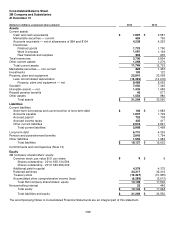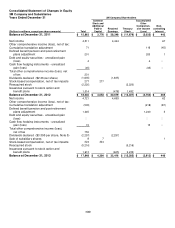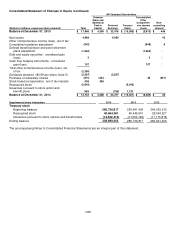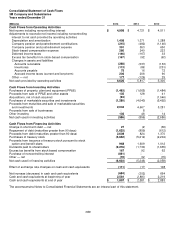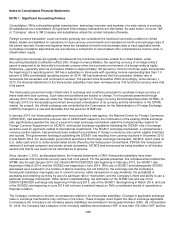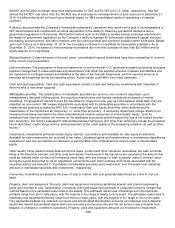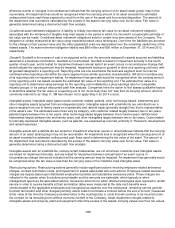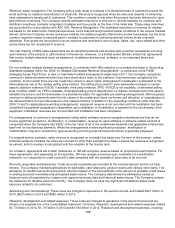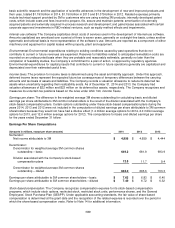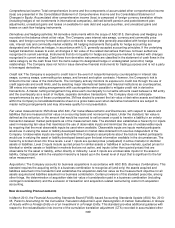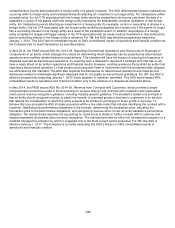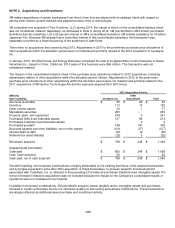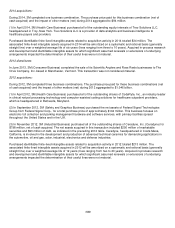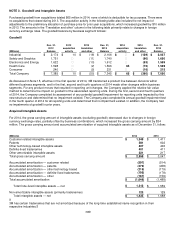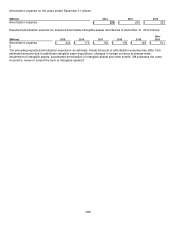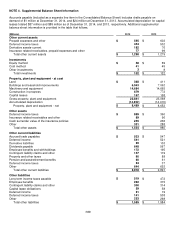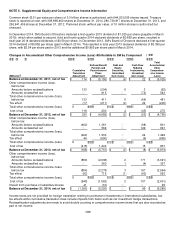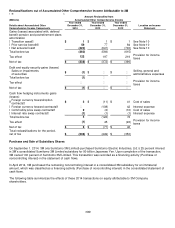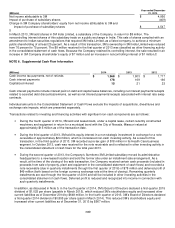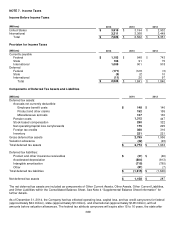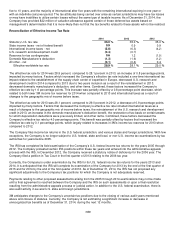3M 2014 Annual Report Download - page 66
Download and view the complete annual report
Please find page 66 of the 2014 3M annual report below. You can navigate through the pages in the report by either clicking on the pages listed below, or by using the keyword search tool below to find specific information within the annual report.60
comprehensive income associated with a foreign entity of a parent company. The ASU differentiates between transactions
occurring within a foreign entity and transactions/events affecting an investment in a foreign entity. For transactions within
a foreign entity, the full CTA associated with the foreign entity would be reclassified into income only when the sale of a
subsidiary or group of net assets within the foreign entity represents the substantially complete liquidation of that foreign
entity. For transactions/events affecting an investment in a foreign entity (for example, control or ownership of shares in a
foreign entity), the full CTA associated with the foreign entity would be reclassified into income only if the parent no longer
has a controlling interest in that foreign entity as a result of the transaction/event. In addition, acquisitions of a foreign
entity completed in stages will trigger release of the CTA associated with an equity method investment in that entity at the
point a controlling interest in the foreign entity is obtained. For 3M, this ASU was effective prospectively beginning
January 1, 2014. This ASU had no immediate impact on 3M’s consolidated results of operations and financial condition as
the Company had no event/transaction as described above.
In April 2014, the FASB issued ASU No. 2014-08, Reporting Discontinued Operations and Disclosures of Disposals of
Components of an Entity, which changes the criteria for determining which disposals can be presented as discontinued
operations and modifies related disclosure requirements. This standard will have the impact of reducing the frequency of
disposals reported as discontinued operations, by requiring such a disposal to represent a strategic shift that has or will
have a major effect on an entity’s operations and financial results. However, existing provisions that prohibit an entity from
reporting a discontinued operation if it has certain continuing cash flows or involvement with the component after disposal
are eliminated by this standard. The ASU also expands the disclosures for discontinued operations and requires new
disclosures related to individually significant disposals that do not qualify as discontinued operations. For 3M, this ASU is
effective prospectively beginning January 1, 2015. Early adoption is, however, permitted. This ASU would impact 3M’s
consolidated results of operations and financial condition only in the instance of a disposal as described above.
In May 2014, the FASB issued ASU No. 2014-09, Revenue from Contracts with Customers, which provides a single
comprehensive model to be used in the accounting for revenue arising from contracts with customers and supersedes
most current revenue recognition guidance, including industry-specific guidance. The standard’s stated core principle is
that an entity should recognize revenue to depict the transfer of promised goods or services to customers in an amount
that reflects the consideration to which the entity expects to be entitled in exchange for those goods or services. To
achieve this core principle the ASU includes provisions within a five step model that includes identifying the contract with a
customer, identifying the performance obligations in the contract, determining the transaction price, allocating the
transaction price to the performance obligations, and recognizing revenue when (or as) an entity satisfies a performance
obligation. The standard also specifies the accounting for some costs to obtain or fulfill a contract with a customer and
requires expanded disclosures about revenue recognition. The standard provides for either full retrospective adoption or a
modified retrospective adoption by which it is applied only to the most current period presented. For 3M, this ASU is
effective January 1, 2017. The Company is currently assessing this ASU’s impact on 3M’s consolidated results of
operations and financial condition.


